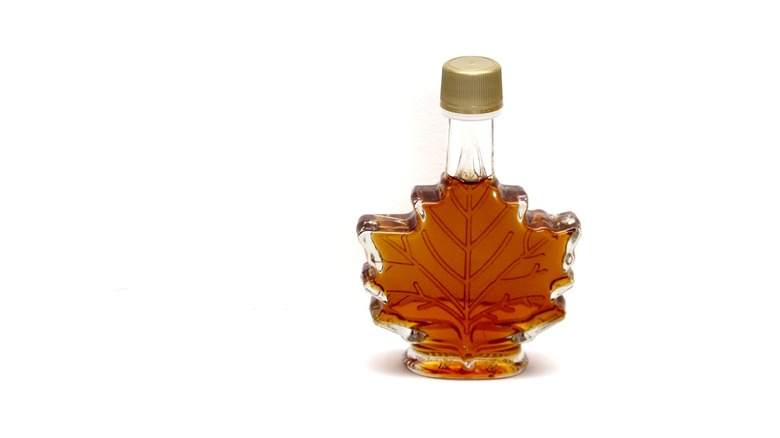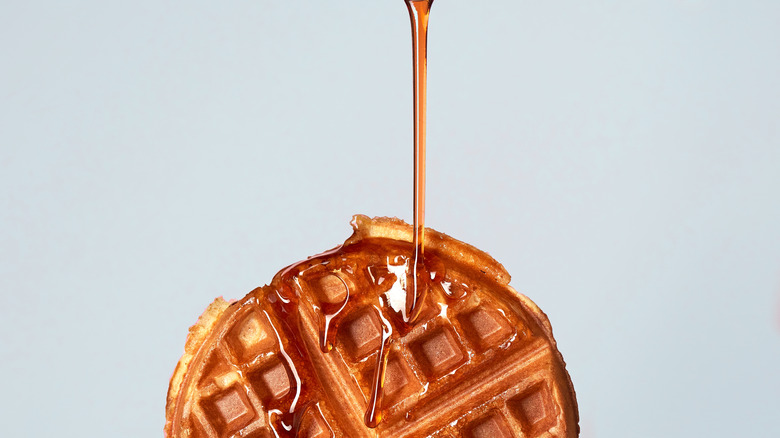The Simple Way To Save Moldy Maple Syrup
The culinary world is a better and more interesting place thanks to sauces, syrups, and condiments, but with so many different options for so many different occasions, it can get confusing which ones to use and when. It's all too common for your fridge space to become cluttered with the many multitudes that you need to maintain a certain standard of living, allowing expiration dates to get away from you ... and then you end up with moldy maple syrup.
It may initially seem weird for your maple syrup to get moldy, but it's actually more common than you might think, especially when left open at room temperature. It does typically take quite a long while for maple syrup to grow mold, but the Cornell Mushroom Blog explains the water content in maple syrup can foster the growth of some fungi. The extremely high sugar content of maple syrup (as well as the many additives that some commercial brands mix in, per Consumer Reports) does much to discourage mold, but on the off chance that you do find something suspicious in your syrup, there is a step you can take before throwing it away.
What to do with moldy maple syrup
According to the USDA, after imitation maple syrup or some sort of mixed product has been opened it can be stored in a pantry for up to one year; If the product is genuine maple syrup it can be stored in a refrigerator for up to a year. Your best bet to figuring out how long your maple syrup will keep, as always, is to follow the storage instructions on the packaging. But what happens if you ignored those directions and syrup is already harboring an unwelcome guest?
If perhaps you have a really nice bottle of maple syrup that got a bit moldy, there is a fairly simple way to save it. According to bulk food company Unpackaged, the mold that maple syrup grows is non-toxic so you can remove the moldy parts from the whole and boil your maple syrup in a saucepan to get rid of impurities. Maple Farmers explains this works because pure maple syrup will only grow mold on the top layer, so anything beneath should be safe to consume.
When de-molding your maple syrup, make sure to keep a close eye on your saucepan, as the sweet ingredient can boil up and over quicker than you might think. Now you'll never face another disappointing, syrup-free breakfast again.

